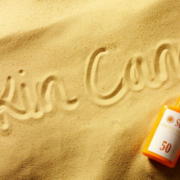Interesting Facts About Skin Cancer
May is Skin Cancer Awareness Month, with the goal to encourage and educate sun-safe habits while raising awareness for lifesaving programs.
Skin cancer is the most common form of cancer in the United States. According to The Skin Cancer Foundation there are over five million new cases diagnosed each year, and although it is the most preventable form of cancer, spreading awareness about unprotected exposure to the sun can change habits and save many lives.
Here are a few skin cancer facts:
- One in five Americans develop skin cancer by the age of 70.
- There are three major types of cancer: basal cell carcinoma (BCC) and squamous cell carcinoma (SCC) [also known as non-melanoma skin cancers], and melanoma.
- Nonmelanoma skin cancers
- Regular use of SPF 15 sunscreen or higher reduces risk of these cancers by 40%
- 90% of these cases are associated with exposure to ultraviolet (UV) radiation from the sun
- Melanoma skin cancers
- The vast majority of melanoma is caused by the sun
- Men age 49 and under have a high probability of developing melanoma than any other cancer
- Women age 49 and under are more likely to develop melanoma than other cancers except breast and thyroid cancers
- Regular use of SPF 15 sunscreen or higher reduces risk of these cancers by 50%
- Although more common in lighter skin tones, melanoma is more dangerous in darker skin tones
- Acral lentiginous melanoma is found in skin areas not exposed to the sun, and is more common in those that have dark skin tones
- Nonmelanoma skin cancers
How can you keep your skin safe during the upcoming summer months? EverydayHealth shared some tips and other helpful facts from the top dermatologists in the country.
- Avoid indoor tanning.
- Tanning beds can increase your chances of developing melanoma by 20%
- Re-apply SPF to keep you skin safe.
- The active ingredients in SPF can break down with time and UV exposure, so to be sure to re-apply every three to four hours. Avoid spray versions and stick to SPF 50 or higher.
- Some medications may increase sun sensitivity.
- Some antibiotics or medications can make your skin more prone to burning, while also affecting your immune system, so ask your doctor about any medications you are taking.
- Sunscreen may trick you into feeling protected.
- Spray sunscreens are difficult to apply and may leave areas unprotected, and can be inhaled and entered into bloodstream and trigger skin reactions. It’s best to avoid any spray sunscreen.
- Certain foods can combat UV effects.
- Foods like red bell peppers, broccoli, and others may help boost UV defense, so get your fill of these helpful veggies.
If you are spending time outdoors it’s good to know different sunscreen types:
- Mineral Sunscreens
- Sits on top of your skin and physically block your skin from the UV waves.
- Chemical Sunscreens
- Works by absorbing into your skin and absorbing the UV rays.
Remember, some sunlight is healthy too! A recent study has shown that not only does sunlight help us make Vitamin D, it also increases levels of other important molecules in the body like serotonin, melatonin, nitic oxide, and may increase endorphins. These changes may improve risk for diabetes, high blood pressure, mood disorder and breast and prostate cancers.
For more skin protection tips, or if you want to know which sunscreen works for you and balancing sun protection and sun exposure, please visit your doctor before you enjoy your time in the sun.













Leave a Reply
Want to join the discussion?Feel free to contribute!